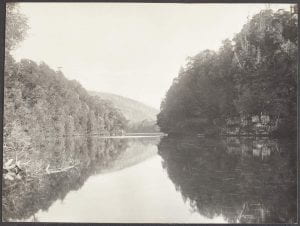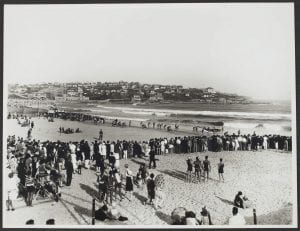A View from the Harbours of ‘White-only’ Australia: Captured for the Commercial Travellers’ Association
Dina Hussein is a PhD candidate at the University of Melbourne’s School of Historical and Philosophical Studies. Her thesis examines the indigenous working-class history of the Egyptian port city of Alexandria in the period between 1850 and 1919.

It is the 1930s in the southern coast of Western Australia, and a group of formally dressed men and women – travellers, settlers, white immigrants, or all the above – are looking out towards the ocean from the harbour. The unknown photographer captures them from behind, lined up facing the ocean next to a modern coach that is elegantly parked along the coast. We are looking at them, looking at the serene and scenic coastline unfolding into the horizon. But what do we actually see in this image? And how should we look at photographs capturing Australia’s colonial modernity?




